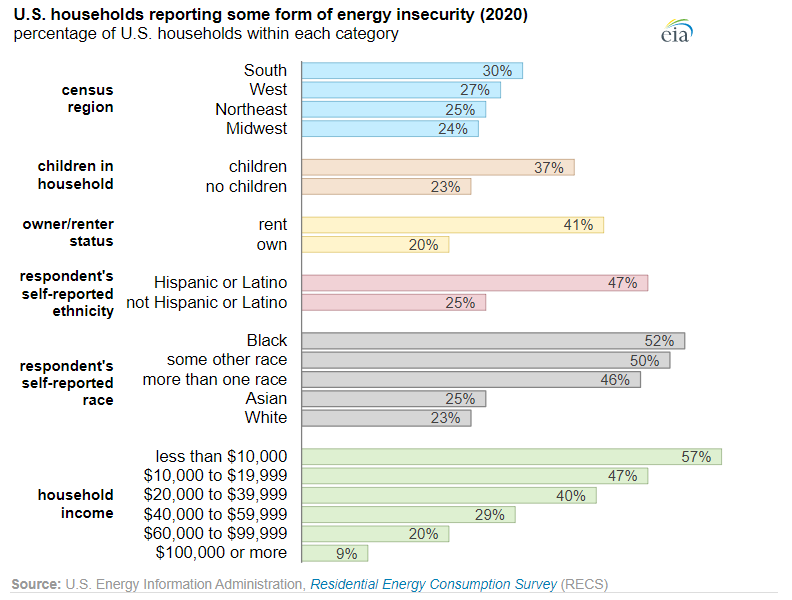Each day, people across the United States rely on energy to fuel their lives, and in many cases, comfortable lifestyles. From morning routines to daily commutes – and from dinner preparation to a warm place to sleep, we rely on affordable, abundant energy to make these basic needs a reality. But what about those that struggle to have their basic needs met due to an inability to pay their energy bills?
According to the U.S. Energy Information Administration (EIA), approximately 34 million households across the nation have difficulty meeting their energy needs. This equates to 27% of homes that struggle with access to or the ability to afford consistent electricity and energy to heat (or cool) their homes. Families continue to face hard decisions on how to spend their income, and even modest increases in energy costs can have a drastic impact on households.
The amount of income spent on energy is known as the “energy burden” and for many families throughout urban and rural settings, this burden is a harsh reality they face each day.
While energy poverty is an issue that affects all corners of the United States, it predominately impacts minorities and low-income households. Additionally, EIA’s study also found that families with children and renters were far more likely to struggle to have their energy needs met. This graphic outlines the types of households that have self-reported energy insecurity >>
As we delve deeper into the colder months, energy poverty becomes an increasing challenge for those that struggle to meet their energy needs. This issue points to the need for increased access to the abundant domestic energy resources that we have in the U.S. As those throughout the energy industry work tirelessly to fuel America, we strive to provide a more affordable energy source to help combat energy poverty in our nation.

